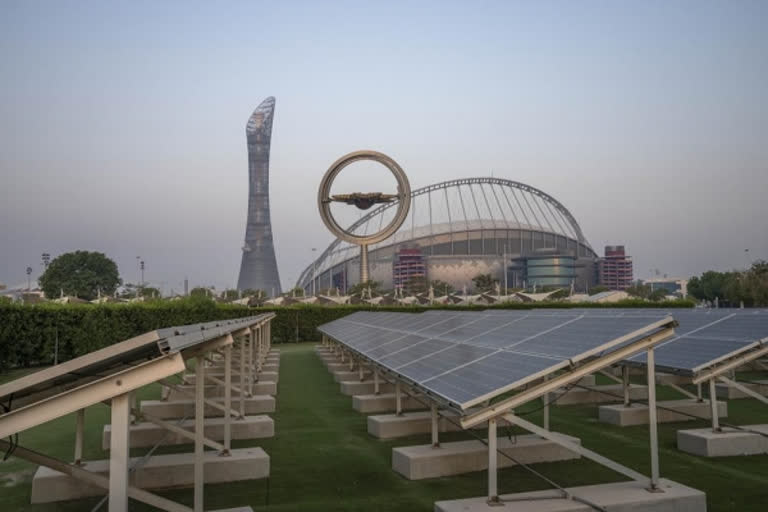Washington:In the 12-year run-up to hosting the 2022 men’s World Cup soccer tournament, Qatar has been on a ferocious construction spree with few recent parallels. It built seven of its eight World Cup stadiums, a new metro system, highways, high-rises and Lusail, a futuristic city that ten years ago was mostly dust and sand.
For years, Qatar promised something else to distinguish this World Cup from the rest: It would be ‘carbon-neutral,’ or have a negligible overall impact on the climate. And for almost as long, there have been skeptics — with outside experts saying Qatar and FIFA’s plan rests on convenient accounting and projects that won’t counteract the event’s carbon footprint as they advertise.
“It’s not very helpful for this type of event to market itself as carbon-neutral,” said Gilles Dufrasne, a researcher at the Brussels-based non-governmental organization Carbon Market Watch, which authored a report questioning Qatar’s sustainability plan. “It gives the impression that we can build massive state-of-the-art stadiums ... and fly people from all over the world to watch football matches and that’s somehow compatible with reaching climate targets.”
In an official report estimating the event’s emissions, Qatari organizers and FIFA projected that the World Cup will produce some 3.6 million metric tons of carbon dioxide from activities related to the tournament between 2011 and 2023. That’s about 3% of Qatar’s total emissions in 2019 of roughly 115 million metric tons, according to World Bank data.
Qatar famously moved the tournament to the winter to protect players and spectators from extreme heat. Even so, the gas-rich nation will air condition seven stadiums that are open to the sky. For water, it will mostly rely on energy-guzzling desalination plants that take ocean water and make it drinkable to satisfy the more than 1.2 million fans expected to touch down for the monthlong event. The Gulf Arab sheikdom is normally home to 2.9 million people.
Qatar and FIFA say the largest source of emissions will be travel — mostly the miles flown from overseas. That will make up 52% of the total. Construction of the stadiums and training sites and their operations will account for 25%, the report said. Operating hotels and other accommodations for the five weeks, including the cruise ships Qatar hired as floating hotels, will contribute 20%.
But in its report, Carbon Market Watch said those figures are not the whole story. It said Qatar vastly underestimated the emissions from building the seven stadiums by dividing the emissions from all that concrete and steel by the lifespan of the facilities in years, instead of just totaling them.
“This is problematic,” Carbon Market Watch said, questioning the likelihood that Qatar, which is smaller than the U.S. state of Connecticut, would have erected seven large stadiums without the World Cup.
Qatar defended its math and said it has worked hard to avoid creating “white elephant” venues that often sit idle in host countries after a tournament has ended. It says it has developed plans for each stadium after the games are over. “No other country has engaged so deeply with its citizens to ensure a sustainable legacy is left behind after a FIFA World Cup,” a spokesperson for the Qatari Supreme Committee for Delivery and Legacy said.
But last-minute hiccups continue to undercut the country’s climate promises. For years, Qatar said the country’s small size would reduce the amount of travel needed between stadiums and games. But despite all the construction, the country is still short of hotel rooms and thousands of fans who are unable to find lodging in Qatar will sleep in nearby Dubai — 45 minutes away by plane — and other Gulf cities.
